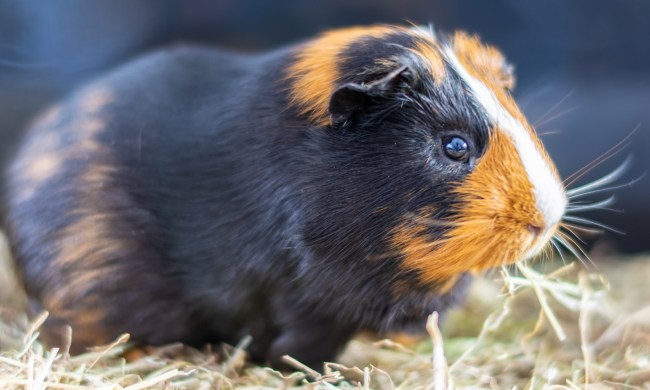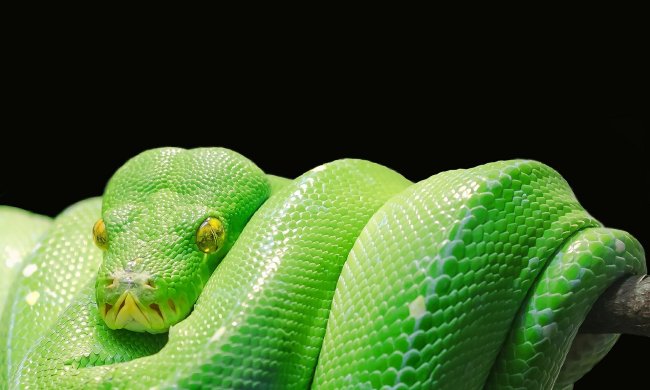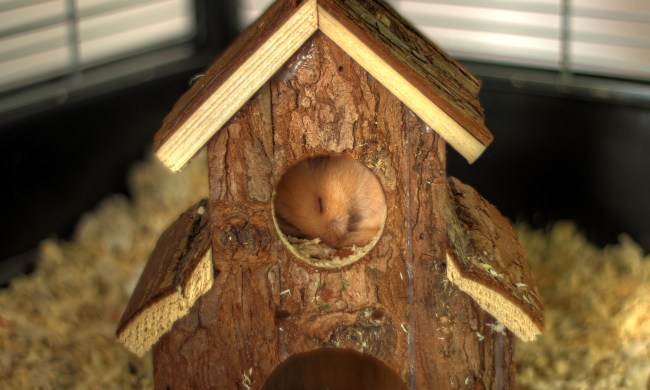Feeding your chameleon can be a fun and engaging part of pet ownership that everyone in the family can enjoy participating in. While maintaining a consistent diet is important for any pet (and probably humans, too), changing it up with occasional treats will get your chameleon excited about mealtimes. Fruits and vegetables work well to supplement his food and keep things interesting. Adding them now and then lets you all enjoy the occasional snacktime while also giving your lizard a few extra vitamins and minerals.
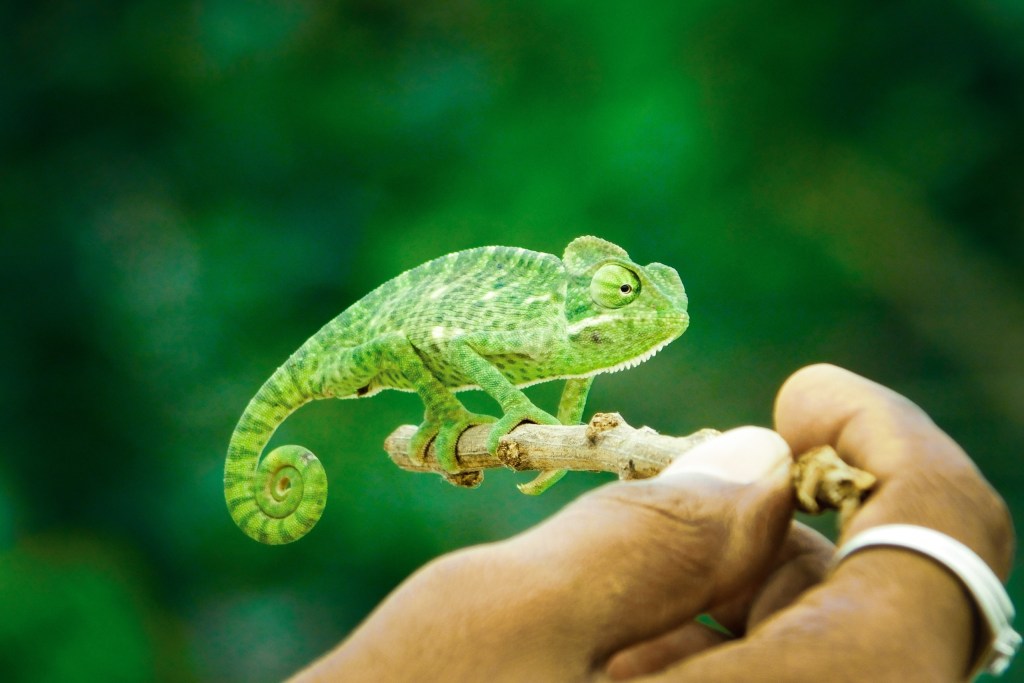
What do chameleons eat?
Before bringing home your pet, you should have a full list of foods chameleons can eat. The staple of their diet consists mainly of insects, and your color-changing lizard will enjoy a wide range of bugs, like crickets and grasshoppers, as well as other similarly high-protein food. Catching insects is the primary function of the long chameleon tongue, though you may see them use it for other activities like licking their eyes. While some very large ones in the wild might eat bigger animals like mammals, your pet will probably stick to smaller prey. If you’re not too squeamish to help, many chams enjoy catching live prey. Place the insect in front of him and let him take to the meal.
In a yearling or older, we recommend feeding them insects approximately every other day, depending on your pet’s size and species. A young chameleon spends much of his time eating, and you will need to feed him insects frequently — daily at least. As your pet ages, you can mix in a larger variety of food sources including greens and fruits. Many owners also choose to include supplements to ensure their reptile is getting enough nutrients to maintain a healthy diet. Getting the proper vitamins will not only allow them to live a long life but will also ensure that their skin stays vibrant in color. Experiment with different methods. Many owners will find success in dusting vitamin powder (containing all the extras chameleons need) onto their food approximately once per week or every other week for an older animal.
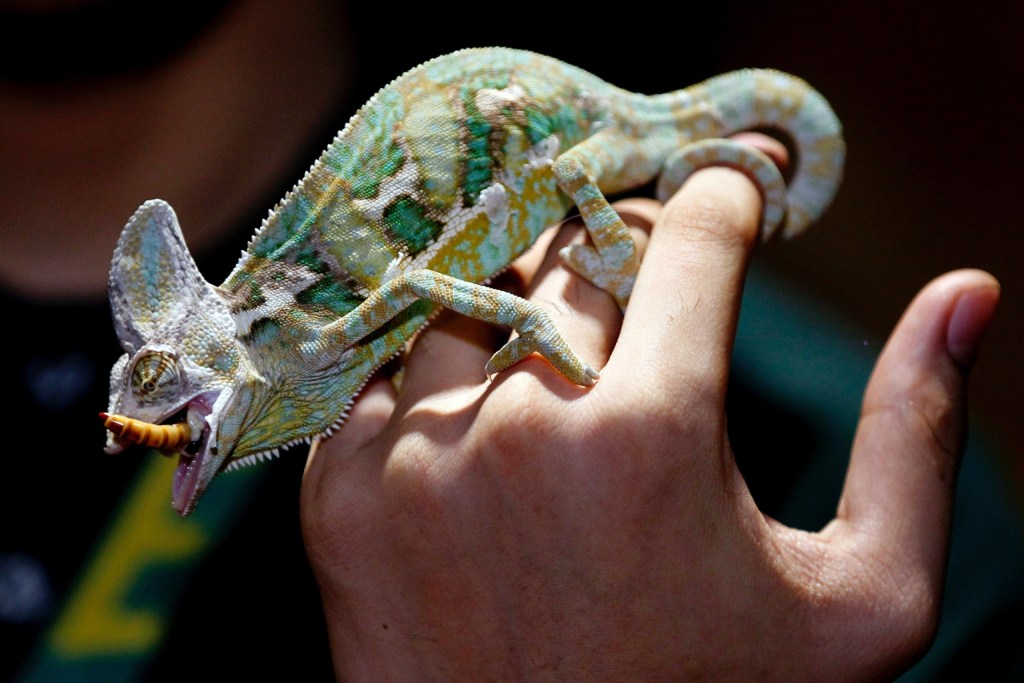
Can chameleons eat bananas and other fruit?
While creepy-crawlies make up the majority of your chameleon’s diet, they, like us, enjoy mixing it up now and then. Especially once they reach maturity, you can begin to introduce other foods such as fruit. Make sure to keep the essentials of your chameleon’s diet consistent as many fruits will not have everything they need to stay in top shape. Think of the occasional bite of fruit as a good way to treat your pet when you want to give him some extra attention. When you’re in the mood to treat him to a little snack, cut a small piece of fruit or vegetable and put it in front of him, like you would his other food. You can add this to his diet once per week or so, and it’s a good way to interact with him on a day you might not otherwise feed him. If your cham’s not having it, you don’t want to force fruit on him or fill him up with treats accidentally.
Start with bananas (you may need to peel them first), apples, and melons, then move on to more exciting fruits if he’s into it. Kiwis, peaches, and mangoes may also interest him. Ensure that you keep things like seeds and pits away from him so he doesn’t swallow any nonedible item by mistake. Also, beware of high-acid fruits such as citrus as they can mess with his digestion and will probably be unappetizing. You can also sub in a few leafy greens or some broccoli. Play around with different offerings and see which ones your animal seems particularly keen on. He may be attracted to a certain plant, or he may be in search of a vitamin boost that fruits can bring.
What are the benefits of fruit?
Your chameleon will surely enjoy the change in routine (maybe he’s even looking forward to fruit day), but introducing fruit will also give him some added vitamins and nutrients. Try different fruits, veggies, and supplements to see what brings out his shine and upbeat personality. In addition to the nutritious aspect, fruit contains a lot of water, which helps keep your guy hydrated.
Your banana budget might increase a bit, but your chameleon will certainly appreciate the addition of new foods. Be mindful of his weight and protein consumption, and you’ll keep him happy and on a balanced diet while still giving him a delicious treat — that you can share, too, of course.

